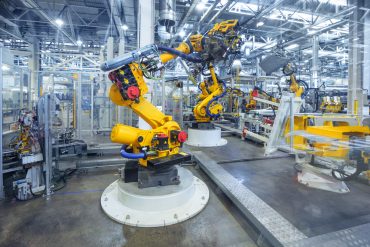
Industrial organization using AI agents must treat them as first-class citizens in the security architecture, not just as tools.
Artificial intelligence agents are rapidly becoming part of the operational fabric in industrial organizations. From optimizing supply chains to predicting equipment failures, they promise transformative efficiency and resilience. Yet, there is a growing security challenge to using them. As AI agents take on more responsibility across both operational technology (OT) and enterprise IT environments, they inevitably expand the attack surface.
When AI Agents Become Gateways
Unlike traditional automation tools, AI agents are dynamic. They learn, adapt, and act with a degree of autonomy. Such flexibility makes them invaluable for complex tasks, but it also creates new pathways for malicious actors. If an attacker compromises an AI agent, the damage goes beyond a single system. The agent often has access to sensitive operational data, interfaces with multiple systems, and in some cases, has the authority to take direct action. In an industrial setting, that might mean halting production lines, misrouting logistics, or even creating unsafe conditions in critical infrastructure.
The growing reliance on multi-agent systems compounds this challenge. An individual agent may only have partial control, but when dozens or even hundreds of agents are networked together, a single breach can ripple outward, causing cascading failures. Essentially, the continuous learning and autonomous decision-making capabilities that make them so useful become a liability when manipulated.
Data Integrity and the Problem of Poisoning
Another major security concern lies in the data that fuels these agents. AI systems are only as reliable as the data they consume. In an industrial environment, agents often rely on sensor readings, production metrics, or maintenance records. If attackers manage to manipulate these inputs, they can effectively poison the agent’s decision-making process. Imagine a scenario where falsified sensor data convinces an agent that a machine is operating within safe limits when, in reality, it is overheating. The result could be catastrophic equipment failure or endangerment of human lives.
Unlike obvious malware attacks, data poisoning is subtle. Detecting such tampering is extremely difficult without rigorous monitoring, because the agent is not “broken” in a traditional sense; it is simply acting on false truths.
See also: AI Agents are Here, and They Highlight a Major Weakness in Enterprise Integration
Identity, Access, and the Human Factor
AI agents also introduce complex identity and access management challenges. Who grants them permission to act, and how do organizations ensure those permissions are not abused? Agents often require cross-domain access, moving between IT systems, cloud environments, and OT networks. Without strict identity controls, this creates opportunities for privilege escalation.
Complicating matters further, human operators frequently underestimate the level of oversight needed. Once an AI agent proves useful, teams may grant it broad privileges out of convenience. Attackers exploit these shortcuts. A compromised agent account with excessive permissions is essentially a skeleton key to the enterprise.
Human error also extends to trust in outputs. Workers may over-rely on AI agents, assuming their decisions are always accurate. Attackers can exploit this overconfidence by subtly influencing agent behavior, knowing that operators are unlikely to question results until it’s too late.
See also: Agentic AI in Industry: The Technologies That Will Deliver Results
The Enterprise Perimeter Has Shifted
Finally, industrial enterprises face a strategic shift in their security posture. AI agents blur the boundary between enterprise IT and OT. They are often cloud-connected, ingesting data from distributed sources, and making decisions that span from business planning to plant-floor operations. The traditional perimeter-based model of security that focuses on protecting the network from external intrusions no longer applies. The attack surface now extends into every interaction an agent has, whether with external data feeds, third-party APIs, or partner networks.
This interconnectedness means that a vulnerability in one part of the system can quickly escalate. A breach originating in a cloud-based enterprise agent may propagate into mission-critical OT networks. Conversely, a compromised factory-floor agent may expose sensitive business data. The boundaries between these domains are no longer distinct.
Minimizing the Security Risks of AI Agents
Despite the challenges, industrial enterprises are not powerless. The first step is acknowledging that AI agents must be treated as first-class citizens in the security architecture, not just as tools. This means giving them the same scrutiny as human users or traditional applications. Strong identity and access management is foundational: enforce least-privilege principles, ensure rigorous authentication, and continuously monitor agent activity for anomalies.
Equally important is safeguarding the data ecosystem. Secure pipelines that deliver trusted, validated data to AI agents reduce the risk of poisoning attacks. Enterprises should invest in continuous data quality checks, anomaly detection, and redundancy measures that can flag inconsistencies before they propagate through the system.
Monitoring agent behavior itself is also critical. Since agents learn and adapt, enterprises must establish baselines of normal behavior and use advanced monitoring tools to detect deviations. If an agent begins taking unusual actions, such as accessing systems it typically doesn’t or making decisions outside expected parameters, alarms should trigger immediate investigation.
Finally, enterprises must build resilience into their architecture. This means assuming that some agents will eventually be compromised and designing systems that can isolate and contain damage. Network segmentation, zero-trust architectures, and automated response protocols help ensure that a single breach does not cascade across the enterprise.






